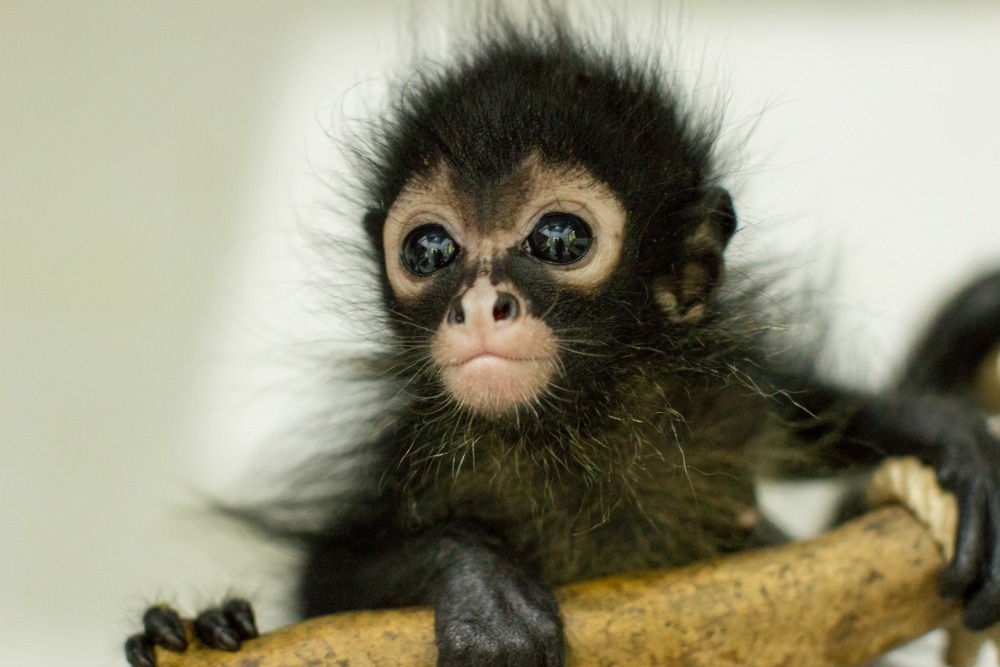
Baby spider monkey © Anna Place/BBC
Living wild species are like a library of books still unread.
Our heedless destruction of them is akin to burning the library
without ever having read its books.
John Dingell
I barely watch any TV these days. Jeff does, and he favors PBS, and so that’s what’s generally on when I finally force myself to go to bed at night.
All too often, that means I happen to be dragging my overtired carcass into bed when Nature is on, and, well, that means tomorrow morning is gonna be rough because I am physically incapable of switching off an episode of Nature.
Action thriller? Meh. Murder mystery? I can google whodunnit tomorrow. A year in the life of a moose calf? I’m on the edge of my seat and (cough) maybe crying a little bit.
Anyway, tonight is the season finale, which means I can watch at a decent hour and still be functional tomorrow.
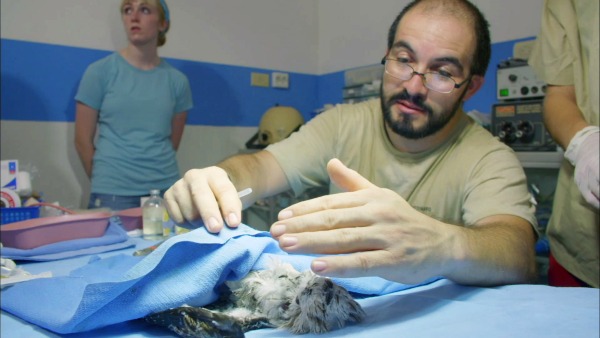
Vet Alejandro Morales wakes up baby northern potoo bird after surgery. © BBC
YOU GUYS. Baby Northern Potoo Bird on the operating table. I am unable to can.
Tonight’s episode (Wednesday, May 18th 8om ET on PBS) is Jungle Animal Hospital, which follows jungle veterinarian Alejandro Morales, his zoologist girlfriend Anna Bryant, and their staff and volunteers for a year as they try to rehabilitate and prepare all types of wildlife for a return to the wild.
Deep in the Guatemalan jungle, there’s an organization whose staff works around the clock to try to save and care for injured, orphaned and endangered animals brought to its facility from all over the country. This rescue center, known as ARCAS, is at full capacity with over seven hundred boarders of all shapes and sizes, chiefly victims of the illegal pet trade. However, the team still tries to accommodate additional rescued animals arriving daily.
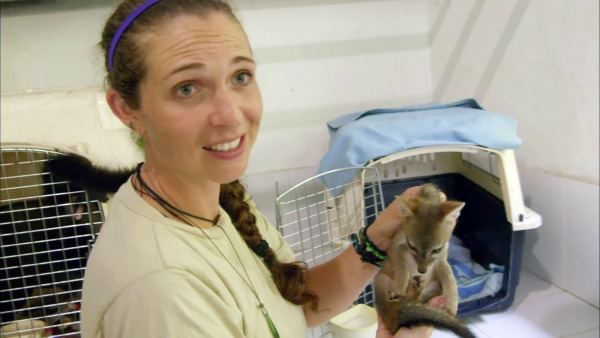
Zoologist Anna Bryant holds up orphaned baby gray fox. © BBC
I can’t even handle the level of cute and amazing and awe of the work these people do, just from these photos alone. It’s going to be something else watching it all unfold over an hour.
Yes, I am really like this in real life.
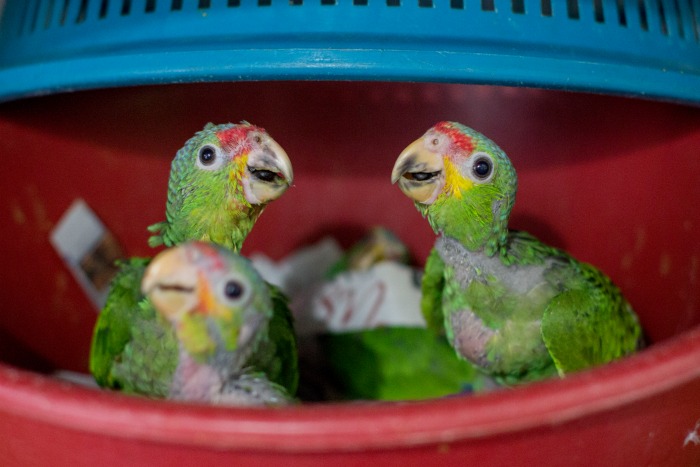
Rescued baby parrots © Anna Place/BBC
The episode will include
- Anna Bryant’s efforts to make sure a troop of spider monkeys would finally be ready to go back to the wild after several years of rehabilitation
- a month-old spider monkey, whose mother was killed trying to protect her baby, beginning the five-year process of preparing for a return to the wild
- a rare baby northern potoo bird being anesthetized with a makeshift gas mask in order to operate on its broken leg
- newly-hatched baby parrots located at road checkpoints as they are being smuggled out on buses
- the first captive-bred scarlet macaw release into the wild in Guatemala— the culmination of the center’s first captive-breeding program, to increase the scarlet macaw population.
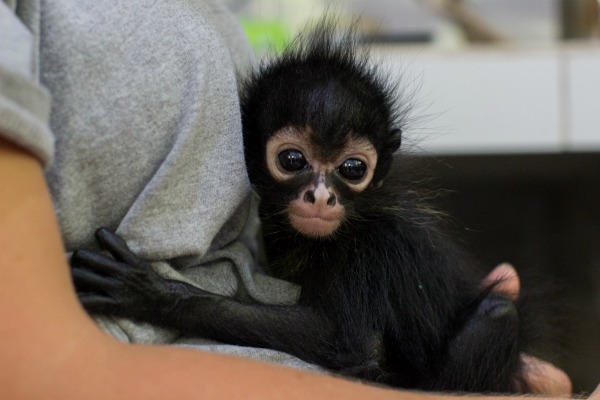
Baby spider monkey being held © Anna Place/BBC
Important adorable detail: the spider monkeys and scarlet macaws are fitted with satellite collars to determine if they are succeeding in the wild
After the broadcast, the episode will be available for limited online streaming at pbs.org/nature. You can also find filmmaker interviews, teacher’s guides and gifs there.
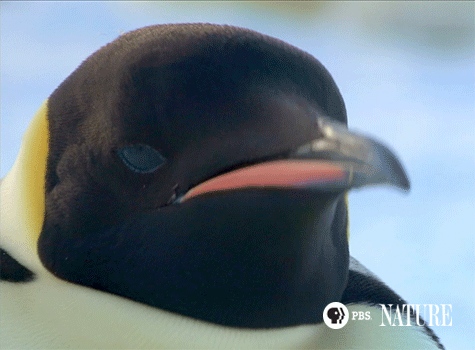
Trust me on this one.
You want to go check out the gifs.
Nature pioneered a television genre that is now widely emulated in the broadcast industry. Throughout its history, Nature has brought the natural world to millions of viewers. The series has been consistently among the most-watched primetime series on public television.
Nature has won more than 700 honors from the television industry, the international wildlife film communities and environmental organizations, including 16 Emmys and three Peabodys. The series received two of wildlife film industry’s highest honors: the Christopher Parsons Outstanding Achievement Award given by the Wildscreen Festival and the Grand Teton Award given by the Jackson Hole Wildlife Film Festival. The International Wildlife Film Festival honored Nature executive producer Fred Kaufman with its Lifetime Achievement Award for Media.





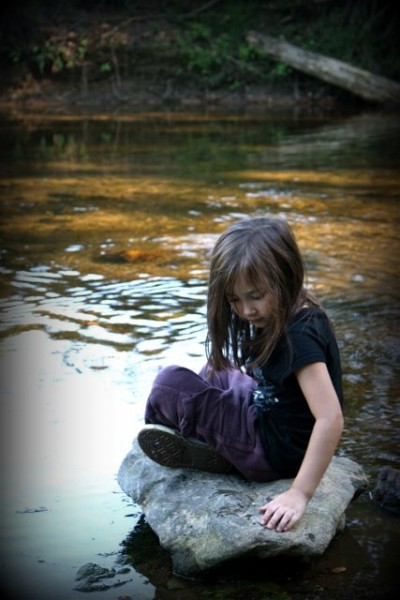

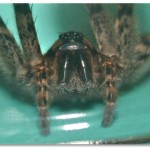



I must say you have high quality posts here. Your posts can go viral.
You need initial traffic only. How to get massive traffic?
Search for; Murgrabia’s tools go viral